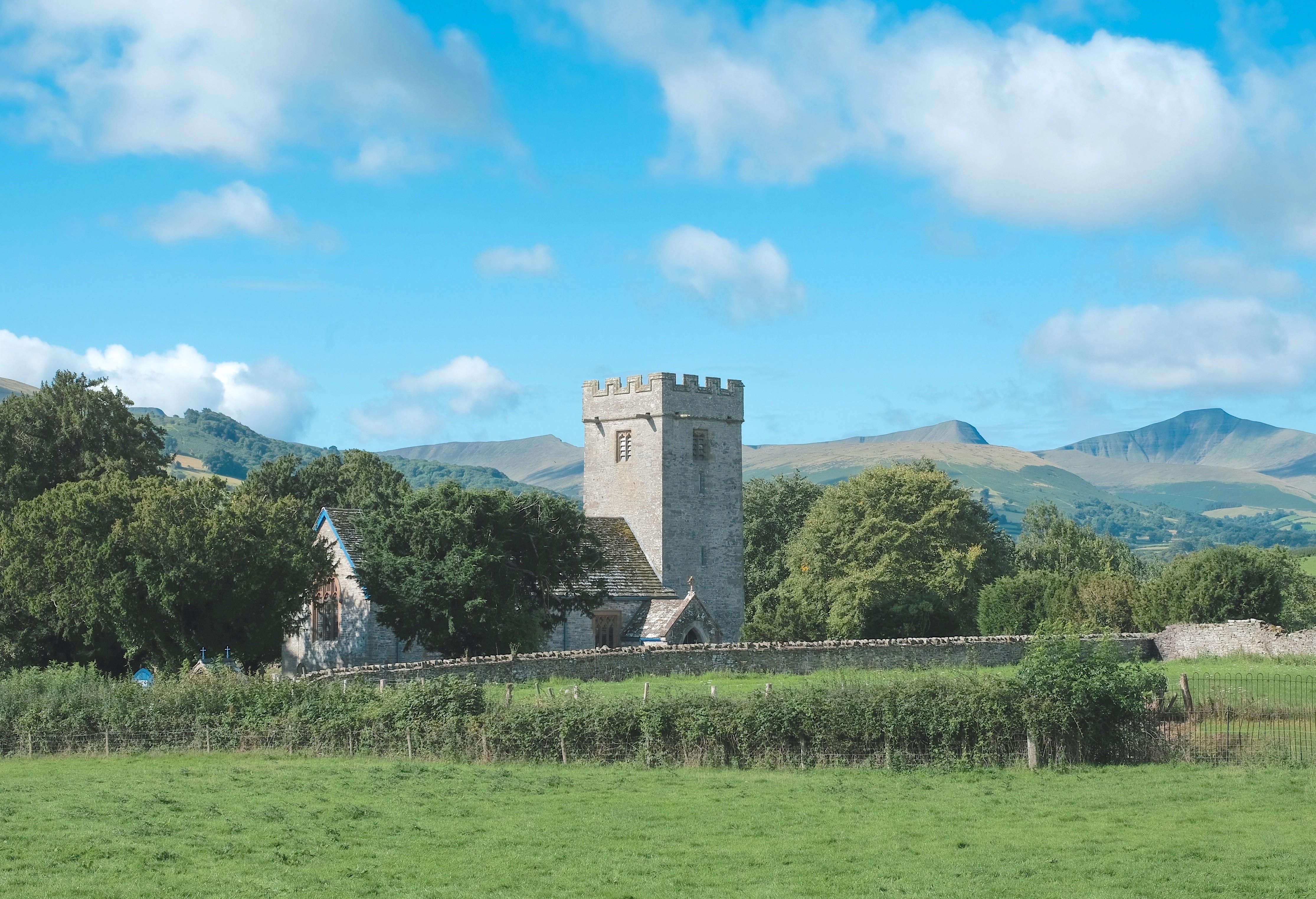St Brynach
Llanfrynach, Glamorgan
Medieval wall paintings and tomb carvings in a church which has completely escaped modernisation.

Attractive village church, with parts dating back to the 15th century, overlooking the River Usk in the Brecon Beacons.
Llanhamlach, Powys
The church of St Illtyd & St Peter at Llanhamlach lies on the eastern side of the River Usk, 5km downstream from Brecon.
The tower and parts of the porch are probably 15th century, but the nave and chancel were comprehensively restored in 1887. Interesting interior features are a 10th century inscribed stone : the 'Moridic Stone', the 14th effigy tomb of Jane Walbeoffe and the painted angels in the chancel. The strongly built tower is typical of a group of 15th century church towers in the area.
The churchyard with its curvilinear shape probably confirms the early medieval beginnings of the church site. The church history is associated with the nearby Peterstone Court (now a country house hotel).
The Moridic Stone was found in 1852 when the former Llanhamalch rectory was demolished. It has a crude inscription stating it was erected by Moridic and an interesting carving on the front face consisting of a cross and two figures possibly representing St John and the Virgin Mary. The full length effigy of Jane Walboeffe is finely carved with flowing clothing and her feet rising on a dog. The painted angels in the chancel are recent replacements of Victorian paintings on plaster which deteriorated beyond repair due to dampness. With the clear tinted glass windows, they make the chancel bright and welcoming, and the church a popular venue for weddings.
Drive past the church lychgate to the car park from which there is also a foot path down to the River Usk. Enter the churchyard from the gate in the car park.
Llanfrynach, Glamorgan
Medieval wall paintings and tomb carvings in a church which has completely escaped modernisation.
Brecon, Powys
The first chapel on this site was a meeting room in a building also used as a pub called The Plough, which stood here in the 17th century.
Brecon, Powys
St Mary's has occupied this site for over 900 years, although we are uncertain of the date of consecration.